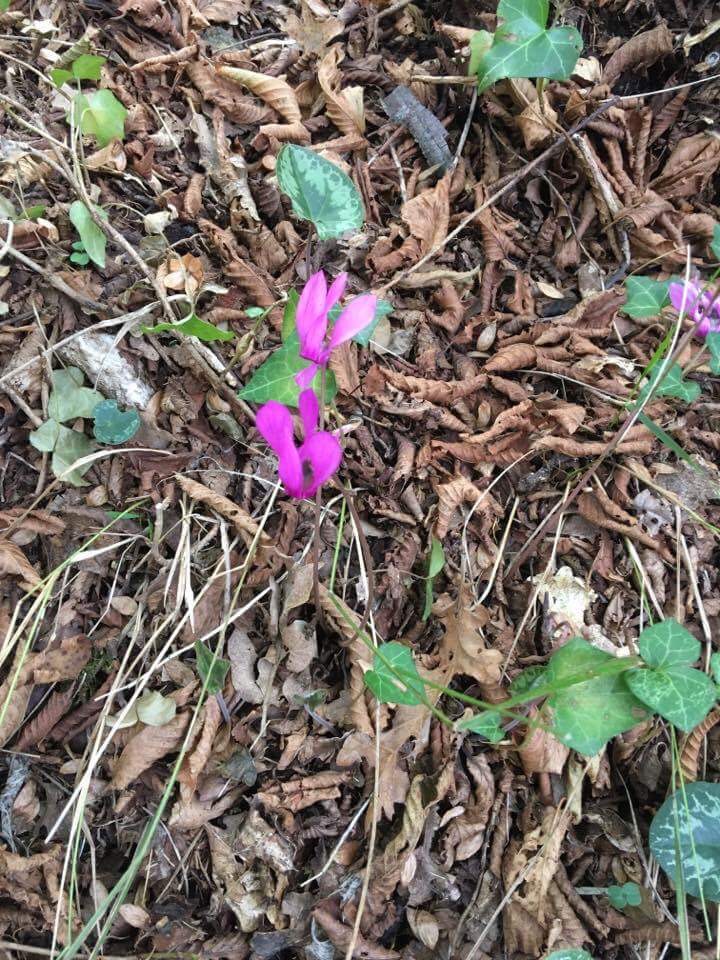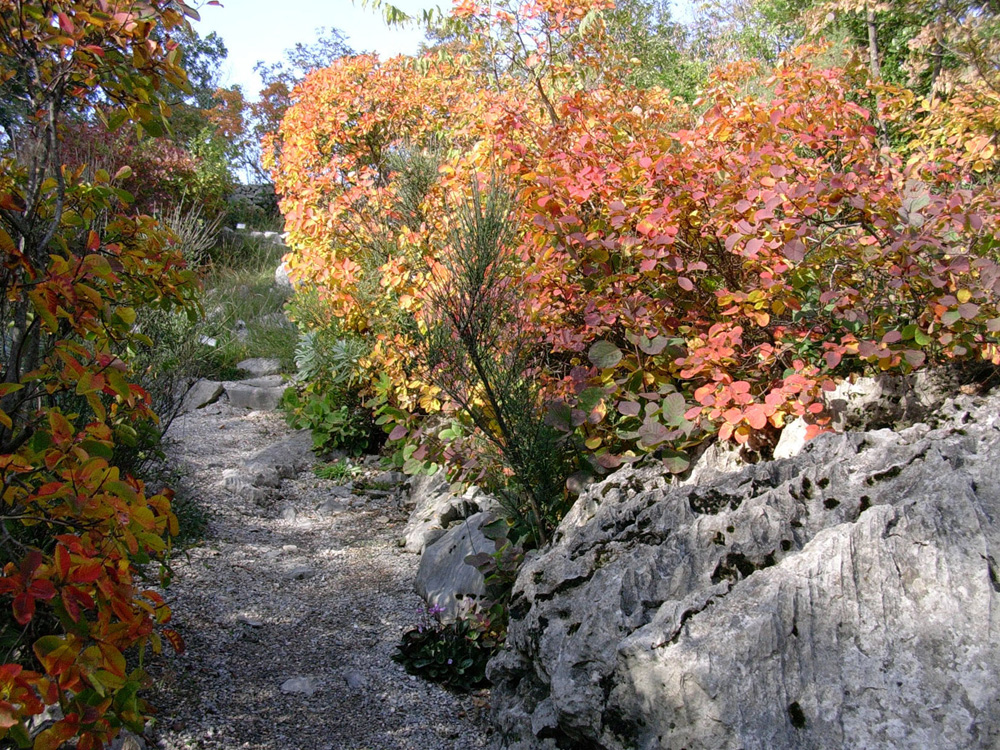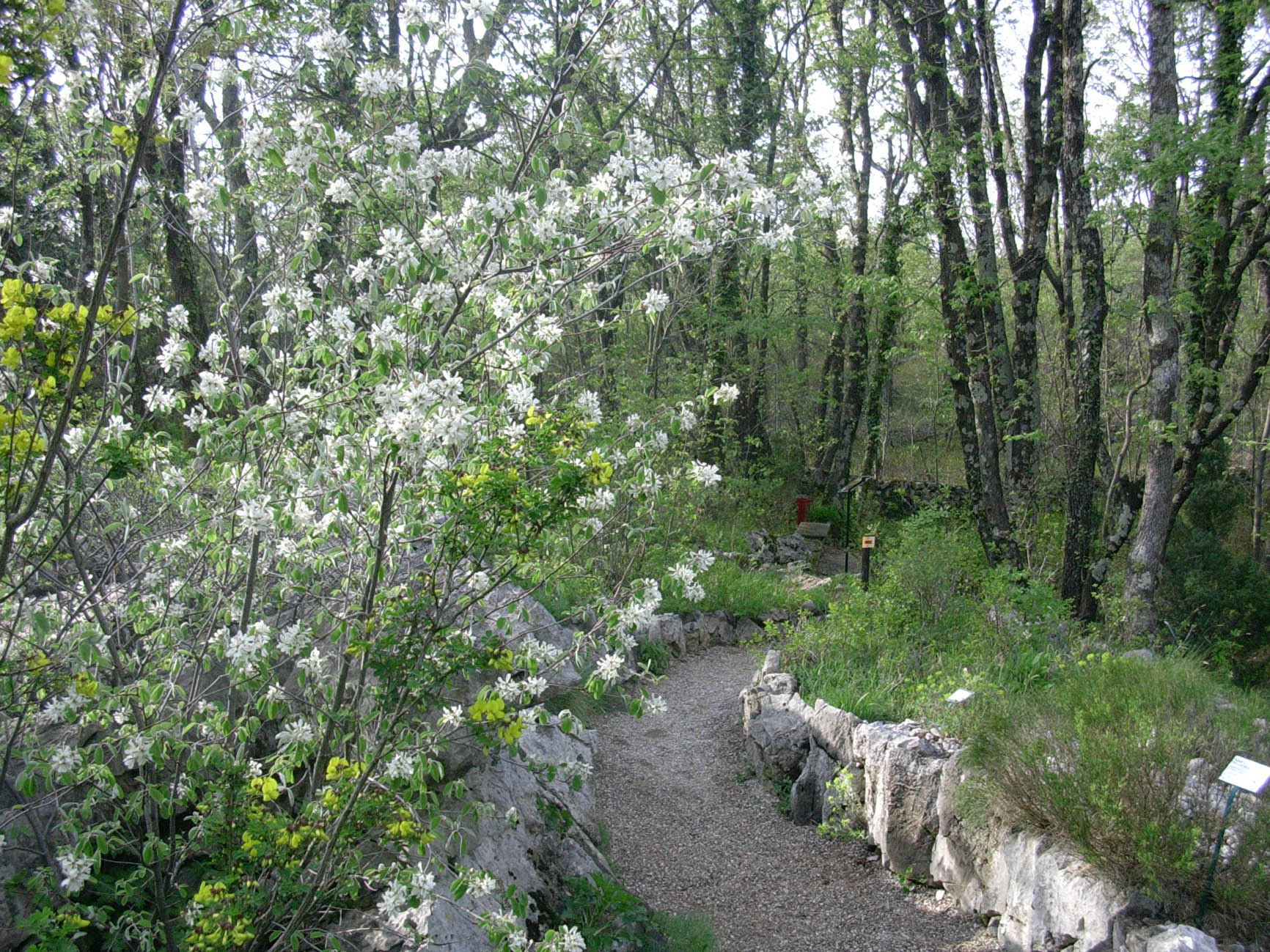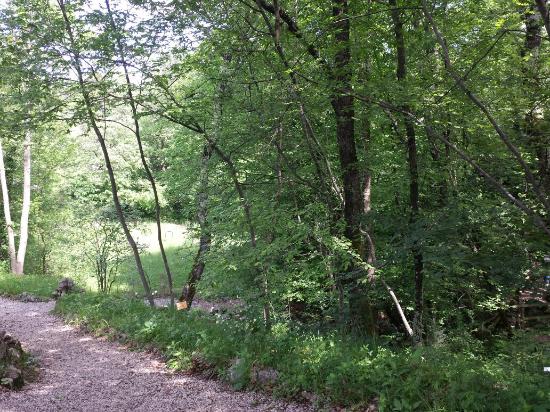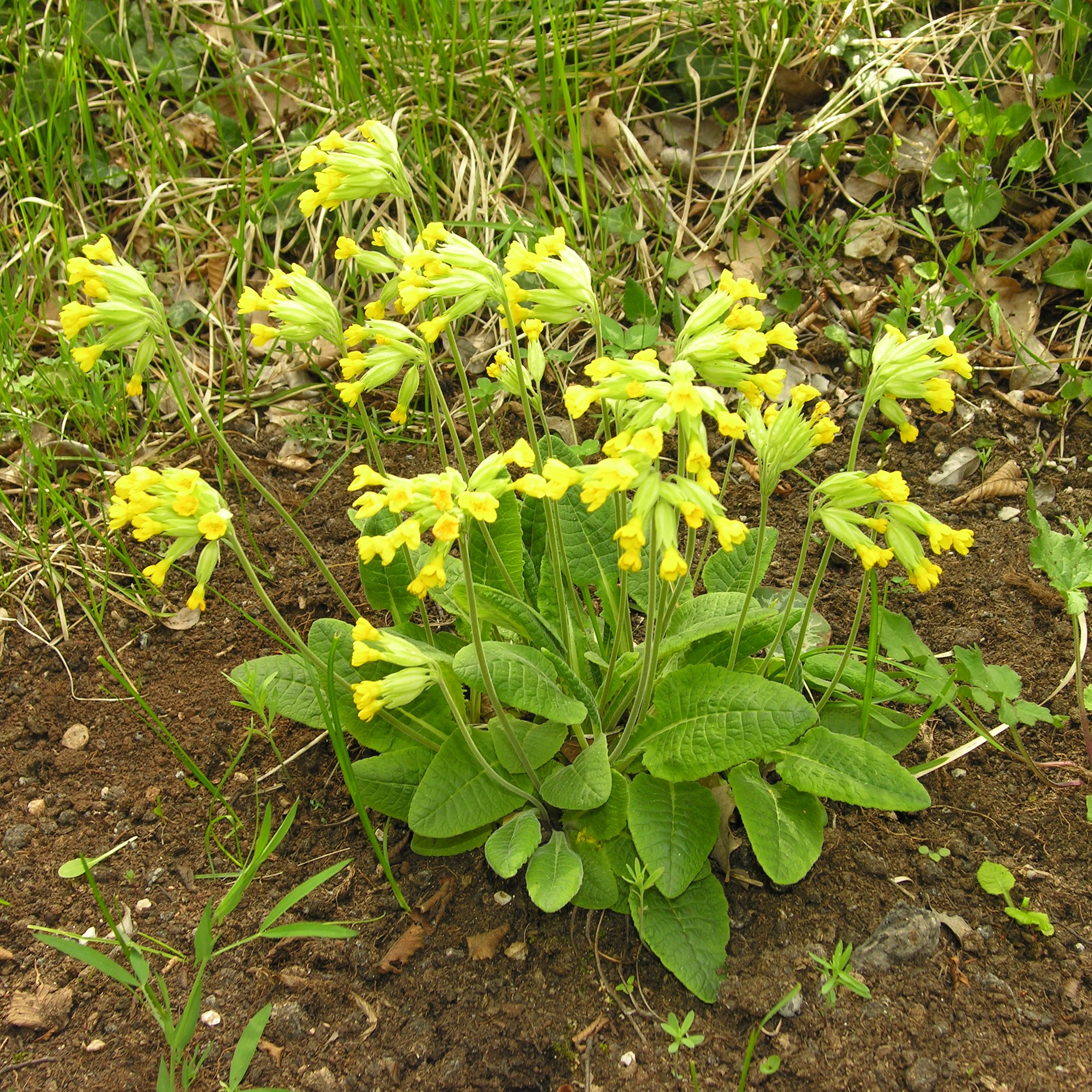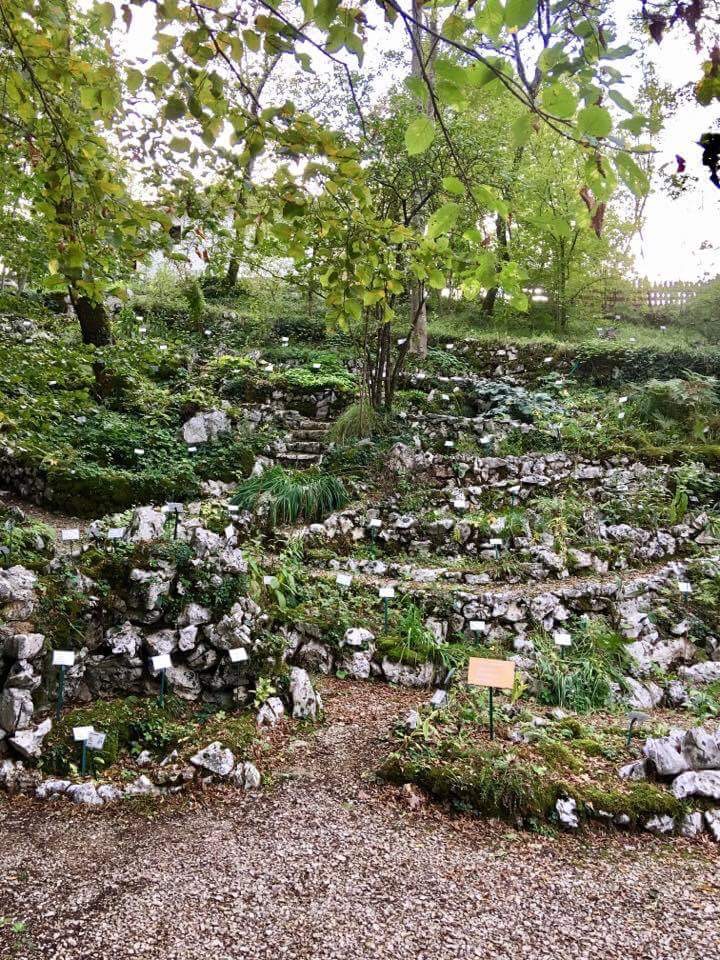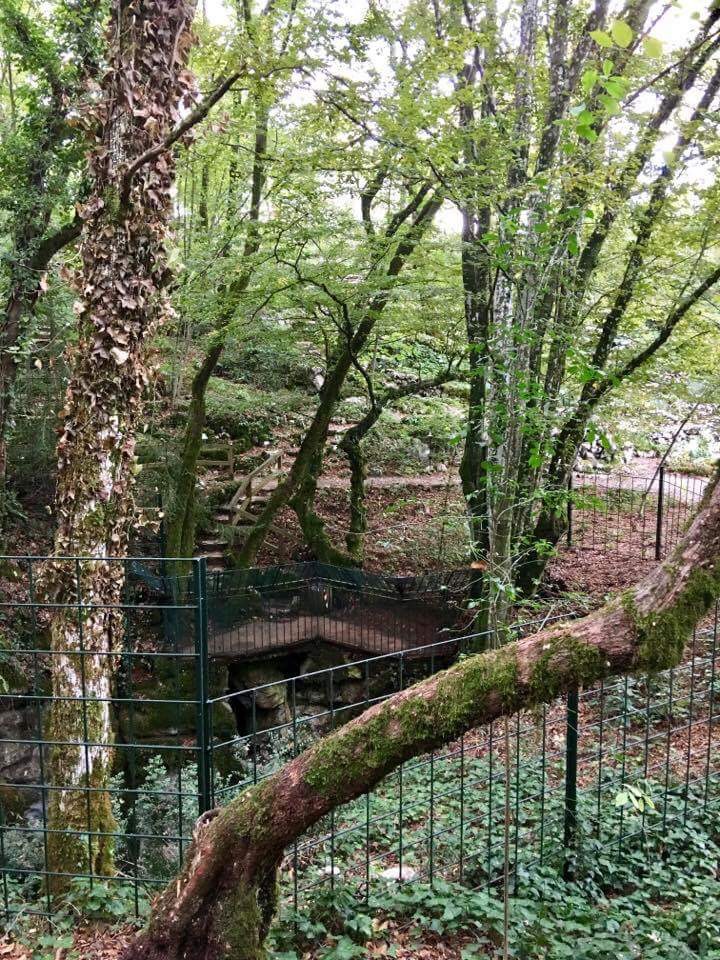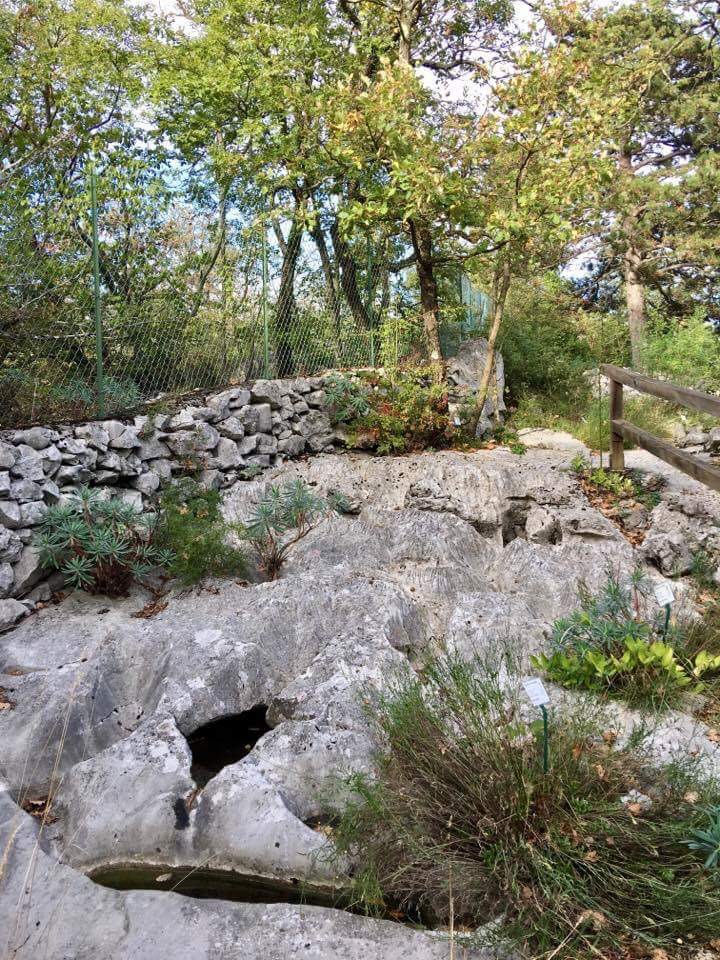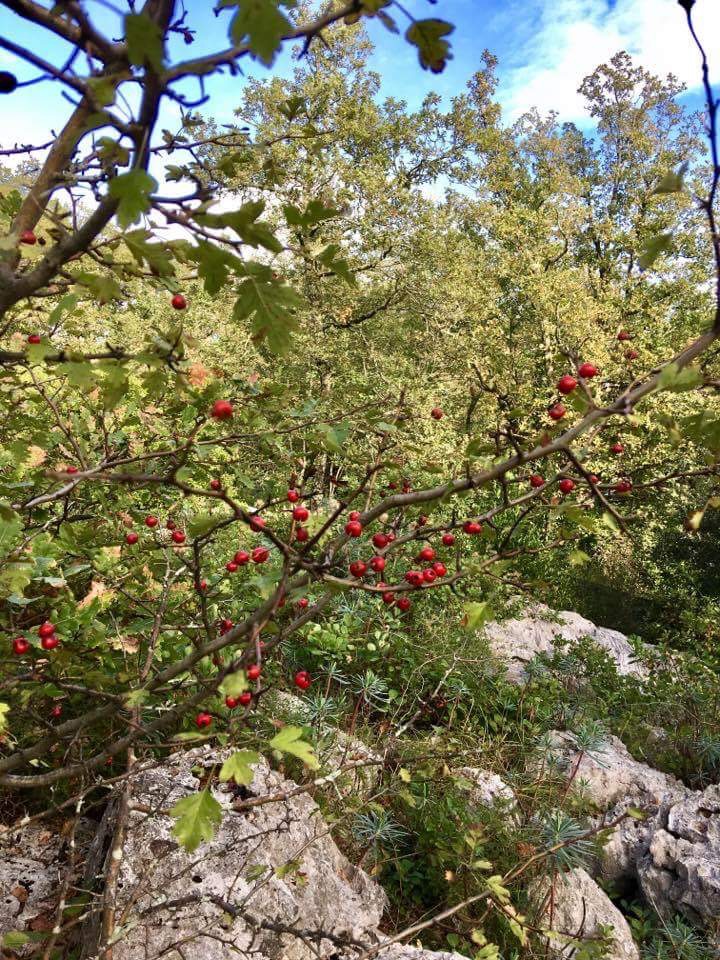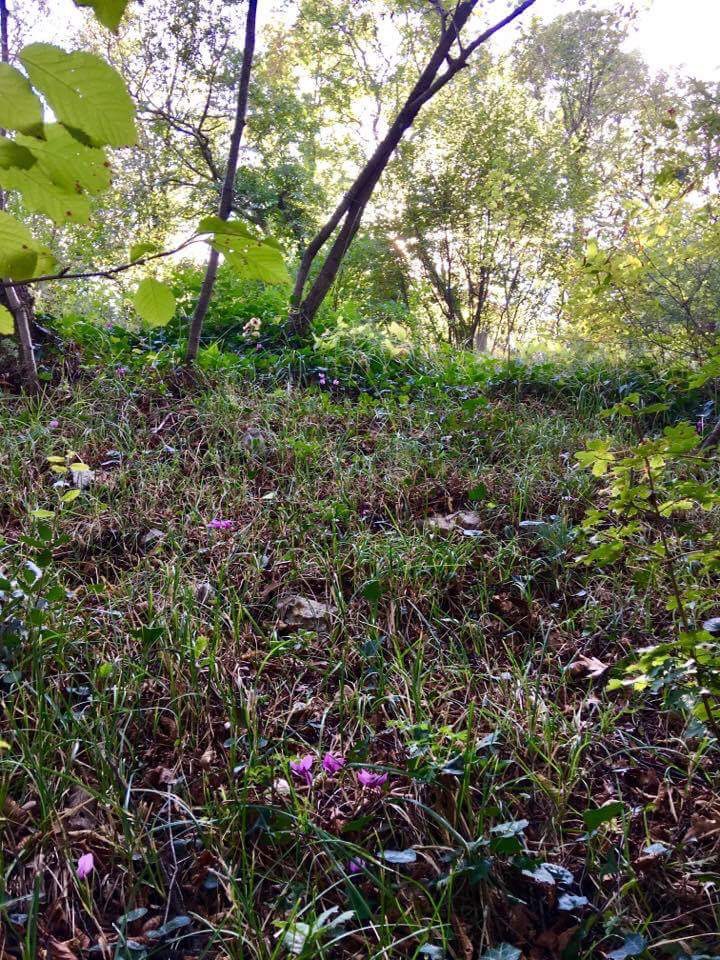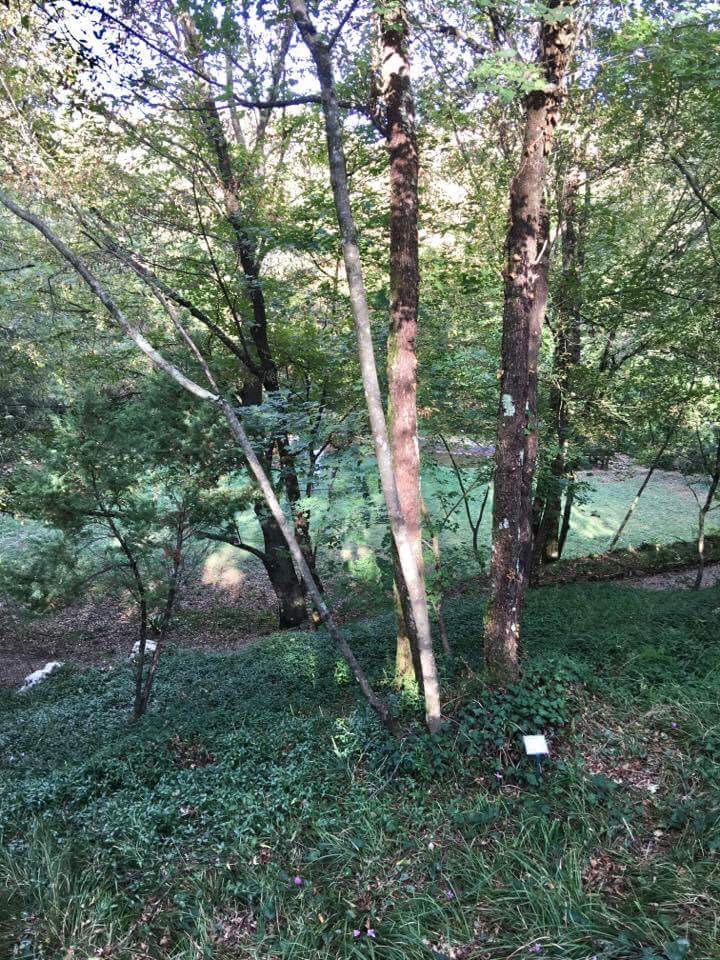
Giardino Botanico Carsiana
This post is also available in:
 Italiano (Italian)
Italiano (Italian)
Located on the Carso Plateau, this garden can be found inside a “dolina” (“sinkhole”) in the municipality of Sgonico, some 18 kilometres from Trieste.
It was built in 1964 by a group of scholars and enthusiasts (Dr Gianfranco Gioitti, Dr Stanislao Budin, and Dr Livio Poldini), collecting and preserving the spontaneous local flora and its surrounding environment.
Dr Gioitti bought the land and took care of the botanical garden for more than 40 years. Fabrizio Martini and Eliseo Osualdini, initially assisted by Giovanni Kocman from Sgonico, developed the flower collections and the actual garden layout.
In 2002, the Province Administration bought this garden, while the Autonomous Region of Friuli-Venezia Giulia has managed it since July 1st, 2016. Rogos Cooperative is the current manager.
This botanical garden is some 1.2-acre wide and contains about 600 autochtonous species of the 1.600 usually found on the Carso Plateau. The entrance to the garden is set at a height of 860 ft, while the grass patch is at 830 ft, and the Karstic well goes down to 131 ft. These peculiar features allow the following different ecosystems within the very same botanical garden:
Karstic bush:
The most common environment on the whole plateau, which was quickly born right after moving pastures elsewhere. It features thin soil and a permeable rocky underlayer. Scattered bushes include sessile oaks (Quercus petraea), Turkey oaks (Quercus cerris), European hop-hornbeams (Ostrya carpinifolia), manna ashes (Fraxinus ornus), field maples (Acer campestre), and Montpellier maples (Acer monspessulanum). Shrubs are mostly made of Cornelian cherries (Cornus mas), mahaleb cherries (Prunus mahaleb), European smoketrees (Cotinus coggygria), and other species.
Grassy patches are mostly made of gramineous grass (Sesleria autumnalis), common peony (Paeonia officinalis), and burning bush (Dictamnus albus).
Screes:
the soil in this part is steep and unstable, while water and nutrients are scarce. Plants are therefore quite scarce and include endemic species like Festuca spectabilis, Drypis spinosa, Biscutella laevigata, Campanula pyramidalis, Galium lucidum, Sempervivum tectorum, and Genista holopetala.
Karstic wood:
it mostly contains sessile oaks (Quercus petraea), sweet chestnut trees (Castanea sativa), brooms (Genista germanica, Genista pilosa, Genista tinctoria), and gramineous plants (Sesleria autumnalis).
Karstic moor:
it has a zoogenic origin, having developed a kind of vegetation which can withstand the trampling of grazing sheep and goats. It features endemic species of plants like cinquefoils (Potentilla tommasiniana), Spring gentians (Gentiana primaticcia), Centaurea rupestris and Carex humilis.
Blooming usually takes place between March and August. There are some Potentilla tommasiniana illyrica, Centaurea crestata, Iris illyrica, and Gentiana tergestina.
The turf is mostly made of Carex humilis and Stipa eriocaulis.
Coastal cliffs:
the typical Mediterranean vegetation includes evergreen oaks (Quercus ilex), Laurus nobilis, Phillirea latifolia, Viburnum tinus, Rubia peregrina, Lonicera etrusca, Ostrya carpinifolia, Fraxinus ornus, and Acer monspessulanum. Tere are some aromatic and officinal species like Salvia officinalis, Pistacia terebinthus, Myrtus communis, and Asparagus acutifolius.
Mediterranean garden:
along the small slope, some typical Mediterranean plants are present, like rockroses, brooms, Arbutus unedo, Capparis spinosa, Ceratonia siliqua, Juniperus communis, J. phoenicea, J. oxycedrus, Opuntia ficus-indica, Paliurus spina-crhisti, Phillirea latifolia, Punica granatum, Quercus coccifera, Quercus ilex, and Ziziphus sativus.
Lawn:
the typical fresh grass lawn with gramineous plants and flowers which cannot withstand trampling and get mown once a year to produce animal fodder. Plant species include speedwells, Buthacus salicifolius, Campanula rapunculoides, Coronilla varia, Filipendula vulgaris, Knautia drymeia, and Salvia pratensis.
Sinkhole wood:
there are many European hornbeams (Carpinus betulus), while the undergrowth features European wild gingers (Asarum europaeum), dog’s-tooth-violets (Erythronium dens canis), spring vetchlings (Latyhrus vernus), wood anemones (Anemone nemorosa), Isopyrum thalictroides, and Two-leaf squills (Scilla bifolia).
Karstic mountain:
Fresh air and humidity, due to the water flowing in underground tanks, allow the presence of hairy alpenroses (Rhododendron hirsutum), dwarf rhododendron (Rhodotamnus chamaecistus), mountain avens (Dryas octopetala), Primula carniolica, and Scopolia carniolica.
Wetland:
water flows along underground tracks, staying on the surface only inside small ponds, and minor depressions used for watering animals and people. There are some typical species like yellow iris (Iris pseudacorus), fen ragworts (Senecio paludosus), reeds (Juncus inflexus and Juncus articulatus), white water-Lilies (Nymphaea alba), and yellow water-Lilies (Nuphar lutea).
Karstic well:
it is a 131-feet deep cavity, in which the development of vegetation follows a certain gradient of temperature, brightness and humidity. There are ferns, hart’s-tongues (Phyllitis scolopendrium), moss (Thamnium alopecurum), green and light blue seaweeds.
Flower beds of medicinal, poisonous and medicinal plants:
located at the entrance to the garden, they were created for instructional purposes.
Carsiana Botanic Garden offers many instructional events, conferences and guided tours.
The first four pictures were taken by the current Garden Manager, Tina Klanjscek. The other pictures were taken by Emanuela Gioitti Torresini, the daughter of one of the founders of the garden, Dr Gianfranco Gioitti.
This post is also available in:
 Italiano (Italian)
Italiano (Italian)
Contatti
Via Sgonico 55 - 34010 Sgonico(TS)
Cell. Rogos: +39 333 4056800 Cell. Carsiana: +39 329 0782902
inforogos@gmail.com
http://www.giardinobotanicocarsiana.it
Altre info
Intero: euro 3,00; ridotto euro 2,00. Abbonamento: intero euro 10,00; ridotto euro 6,00
Da 21 marzo al 2 novembre
dal 21 marzo al 3 novembre con il seguente orario: martedì-venerdì: 10-13; sabato-domenica e festivi: 10-13 e 15-19. Dal 16 giugno al al 14 agosto anche martedì-venerdì: 16.00-19.00.
